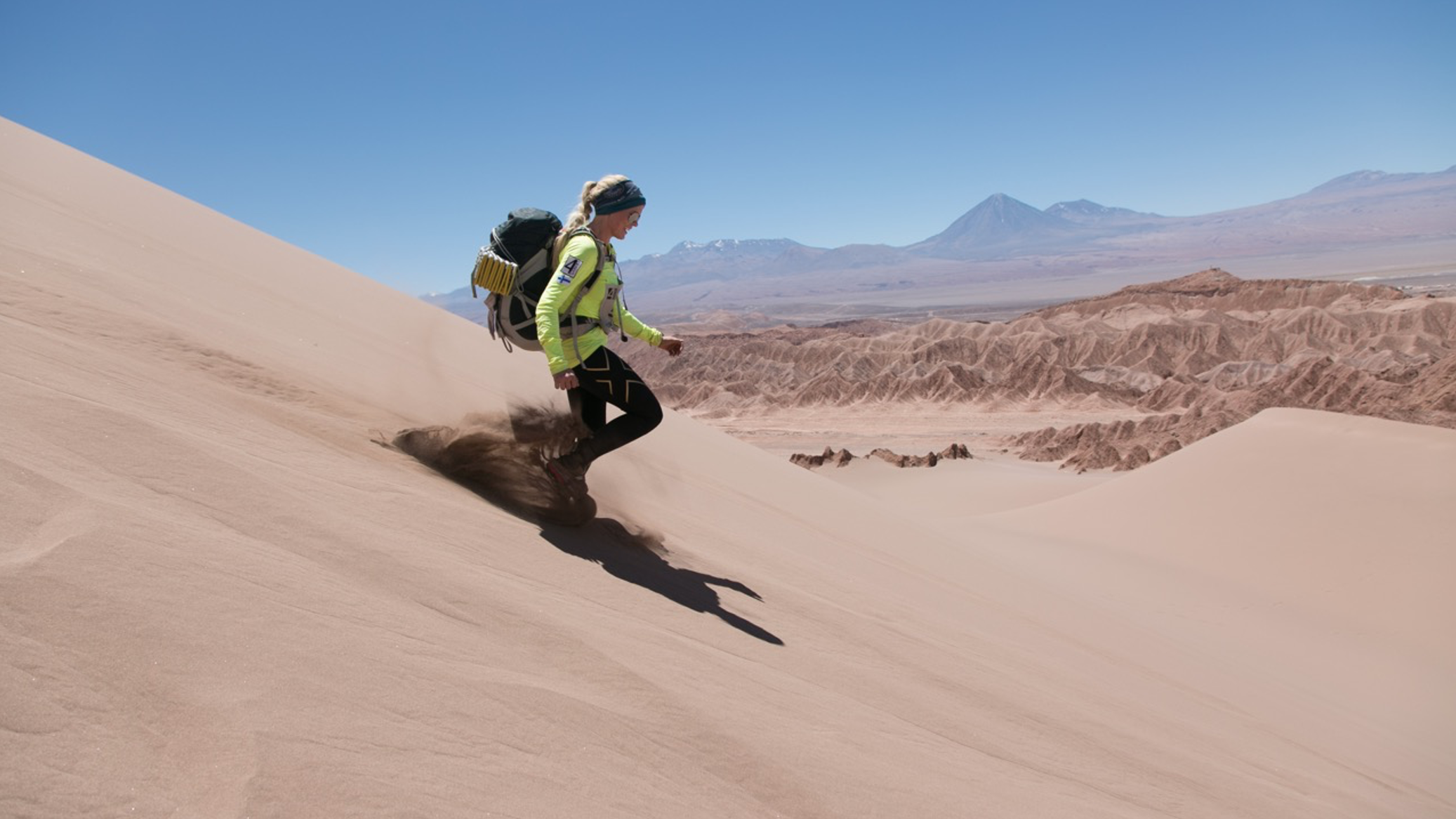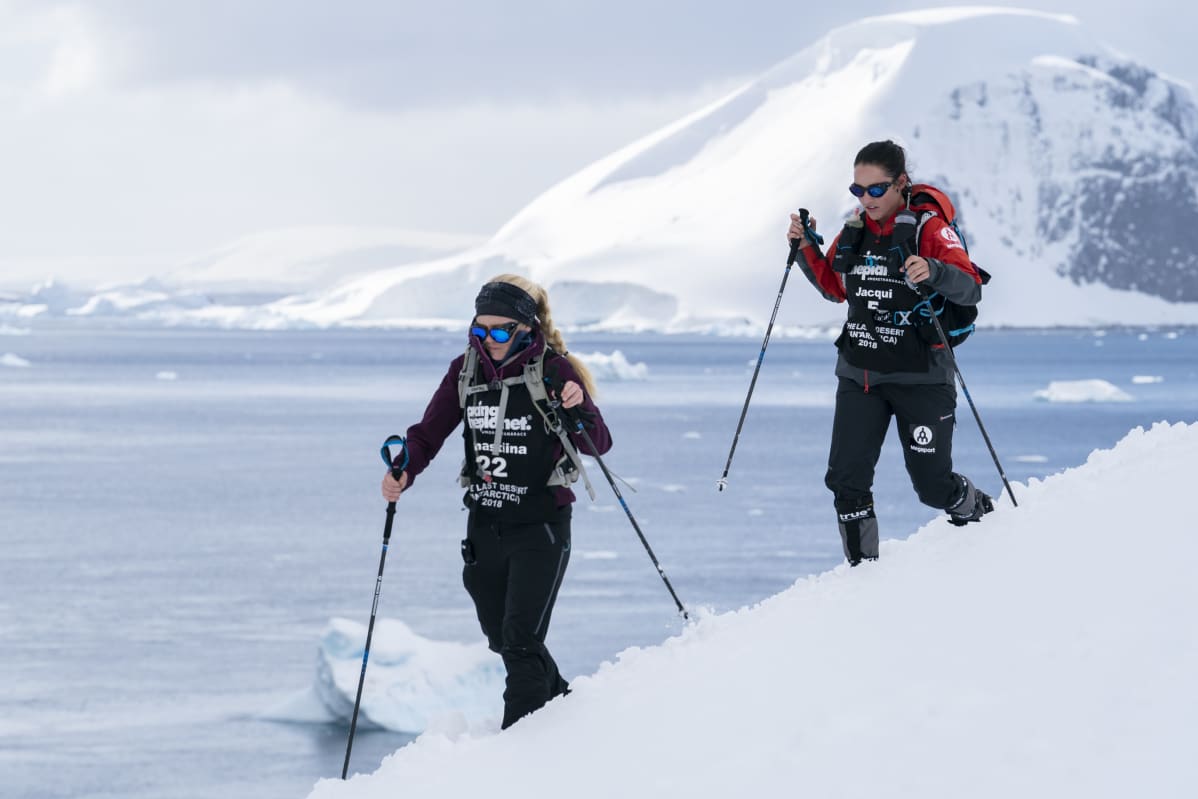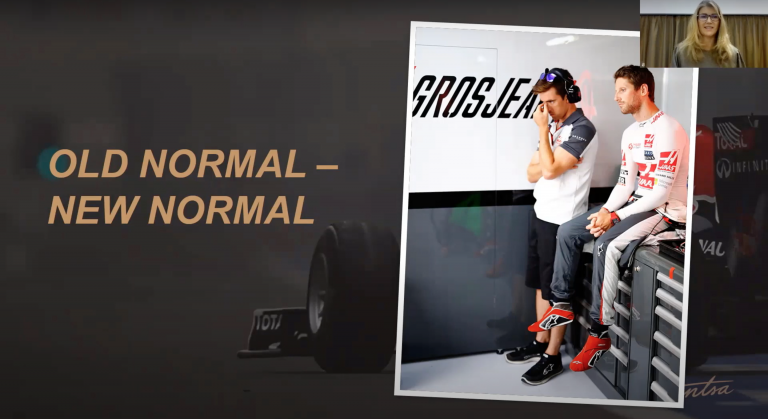6 Life Lessons From Running 250km in a Desert

Finally, I reach the top of the dune, blink the sand out of my eyes and gaze towards the horizon. The hope of catching a glimpse of the next check point fades: all I see is sand. I’ve run 200 kilometers, but I still have 50 more to go. My water is dangerously low, and my running companion’s hurt foot is swelling by the minute. The thought crosses my mind: why do I do this again?
It’s often said that work life is a marathon, not a sprint. But I would argue it’s actually an ultramarathon. I ran my first ultramarathon in 2014 and have kept on running ever since. In 2018 I became the first Finnish person to complete the 4 Deserts Ultramarathon series, recognised by the TIME magazine as the “ultimate test of human endurance”.
Mind you, I’m not an athlete. I started running longer distances as I was recovering from my burnout. There was something thrilling about a challenge I did not know if I’d survive. But I kept at it for another reason – the profound lessons it taught me about pacing and planning my life. Because in order to make it to the end of an ultra, the secret is not in the best running technique – paradoxically, the most important lessons are about preparation and learning to slow down. I personally find these lessons also helpful when thinking about a more sustainable way of working.
Here are the 6 key key lessons I have learned from running 250km in a desert:
1. Pace yourself
Running ultramarathons has taken me to incredible places: mountains, deserts, even Antarctica. A common misconception about ultramarathons is that you run throughout the entire race. In reality you adjust your pace to your surroundings. The first lesson for ultra-newbies is to run the downhills and walk the uphills. A similar logic can be applied to work.
At Hintsa we talk about adjusting our key habits according to four modes: Your normal mode is your long-term sustainable pace. But sometimes we are on a mission, e.g. faced with a tight deadline or a challenging project. If in normal mode you go to the gym twice a week, in mission mode you take the stairs. The important thing to understand is that your mission mode cannot be your normal mode – and it must always be followed by recovery. The fourth mode is renewal: it’s the point in time when you take a step back and reflect on where you’re headed.
2. Take regular breaks
During the course of an ultramarathon, you will see the competitors regularly stopping to refuel, stretch their legs or attend to their blisters. In longer races, they might even take a nap. They know that they need to take sufficient breaks to make it to the end. The same applies to a workday. Our ability to maintain an intense focus is limited. Most people can push themselves hard for 1 hour without rest, and the best musicians only train for 4 hours per day. Our cognitive performance varies by an average 20% per day.
At Hintsa we talk about three cognitive gears. The high gear is for intense focus, some might even call it a state of flow. The low gear is idle time for your brain. The middle gear is characterised by fragmentation and partial attention. The problem is that we often fill our recovery time with “pseudo-work”, staring at our phones, flipping through news or our Instagram feed… We don’t recover, and hence struggle to focus – getting stuck in the middle gear.
3. Brutally prioritise
Packing for an ultramarathon is a meticulous activity. Runners are known to cut the handle off their toothbrush to reduce the weight of their backpack. They want to make sure they have exactly what they need, but nothing more. There is a strange sense of satisfaction to carefully weighing and then removing items from your bag… Individual items may seem light, but they add up and get heavier by kilometre – trust me.
Prioritisation is also an evergreen topic at work. Similar to packing for an ultra, it’s the little things that add up. Suddenly our calendars are filled with all things “important and urgent”. We get stuck in a reactive state. Ironically, one of the cognitive symptoms of chronic stress is the inability to make decisions. It becomes even harder for us to prioritise. So can we be even more critical about how we spend our time? After all, by saying yes to something, we are saying no to something else.

4. Focus on prevention
Seasoned runners will know exactly where to apply tape in their bodies to prevent blisters, which foods and drinks to avoid, and how often and how much electrolytes they must consume to keep hydrated. All these are preventative measures to tackle potential challenges ahead. That being said, there will always be ones that you don’t see coming.
Arguably, the rapid shift to remote work due to Covid-19 was a challenge most of us were unprepared for. A year in I think I finally got the basics covered pretty well. Fixing my home office setup significantly improved my quality of life, and I regret not doing it sooner. But the structures with the biggest impact on my productivity have not been physical. It’s been things like blocking time for focused work every week, scheduling breaks in-between my meetings, and creating temporal boundaries for work, such as agreeing to go for a run with a friend or promising to FaceTime my mother. As I’m writing this, I’m already focused on preparing for the new normal. There are certainly habits I wish to maintain.
5. Disconnect fully
In the 4 Desert series competitors are given the opportunity to connect with the outer world via a “Cyber Tent”, where they can update their blogs and answer messages from loved ones via a special mailbox. To be honest, I don’t exactly know how the system works since I never used it. One of the biggest benefits of running in a desert for me has always been the forced disconnect. No matter how much I wanted to, there is no way of checking my work email or Whatsapp. And even though the first day always feels a bit uncomfortable, the following days are… Well, the feeling is actually kind of hard to describe. The closest word I can think of is “space”.
As I run through the empty desert or lay down at the camp site at night having given it my all, my thoughts are free to wander – or just to be still, soaking in all that’s around me. I recognise that being completely off the grid for a week is a luxury. But in a world that’s always on, perhaps we should consider it more of a necessity? If you can’t get away for a week, try switching off your devices for a weekend and pick up a book or go for a long walk. I guarantee you it’s a welcome rest for your brain.
6. Run with a friend
Finally, despite all the preparation, in every single race, there comes a point in time when you question your sanity. Admittedly, running 250km in a desert is not for everyone. That is why for the longest and most difficult stages, the race personnel encourage you to team up with another runner. This has been my single biggest learning – run with a friend.
We all run into tough patches, in work and in life. It’s during those patches that the value of our relationships is put to the test. We are faced with the consequences of our own choices and actions. Two questions that I regularly ask myself: What are the things, and who are the people that really matter to me? And am I spending my time and energy according to my values?



